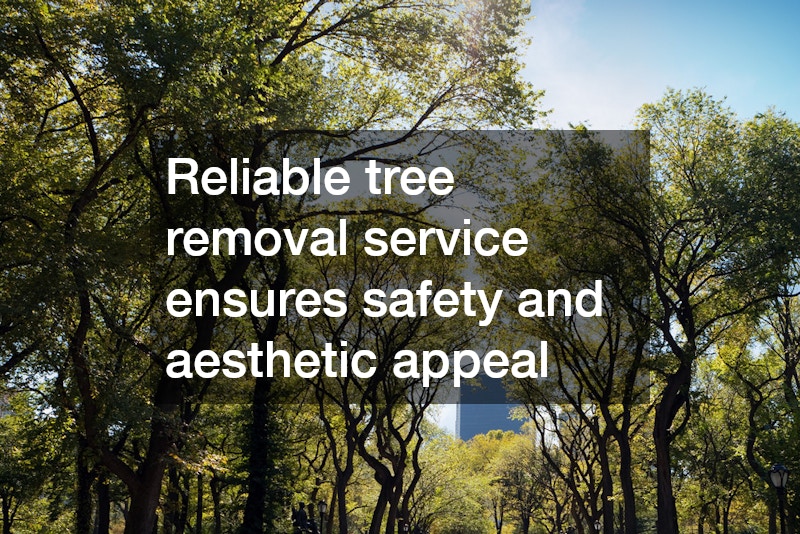Tree removal is a significant undertaking that should not be taken lightly. Whether for safety, aesthetics, or utility, understanding what tree services entail is critical. This article will explore what you should expect when hiring a tree removal service, addressing the common concerns and questions that arise during the process.
How is the tree removal assessed and priced?
Factors Influencing Cost
Several factors can significantly influence the cost of tree removal services. The size of the tree is often the most noticeable factor, as larger trees require more labor and potentially heavier equipment. Moreover, accessibility can play a crucial role; trees in hard-to-reach areas may incur additional costs due to the complexity of bringing equipment on-site safely.
Another consideration is the complexity of the job, which can vary depending on the tree’s location relative to structures, power lines, or busy streets. A tree that poses a higher risk to nearby properties or people will typically require additional precautions, affecting the overall price.
Detailed Inspection Process
The inspection process is a critical first step that helps tree removal services accurately assess the scope of the project. During this phase, a professional arborist or a tree specialist typically examines the overall health and structural integrity of the tree. This examination often includes checking for signs of disease, pest infestations, or structural weaknesses such as cracks or splits in the trunk or branches.
In addition to evaluating the tree itself, inspectors will often review the site conditions to better understand potential challenges and logistics. This includes inspecting the surrounding environment for obstacles and identifying any nearby structures or utilities that need to be protected during the removal process.
What methods and equipment are used in tree removal?
Modern Techniques
Modern tree removal techniques have significantly evolved, incorporating advanced practices to enhance efficiency and safety. Methods such as climbing and spiking are commonly employed, particularly for trees positioned in challenging locations or with limited accessibility. Professional climbers use specialized harnesses and ropes to maneuver through the tree, ensuring minimal disruption to the surrounding environment.
Another notable technique is dismantling, which involves removing trees in sections. This approach is often used for larger trees or those situated near buildings, power lines, or other obstacles. By cutting the tree into manageable parts, workers can safely lower each section to the ground, reducing the risk of damage to nearby structures or land.
Safety Gear and Precautions
The use of appropriate safety gear is paramount in ensuring the well-being of workers and the property during tree removal operations. Standard protective equipment includes hard hats, gloves, and safety goggles, which protect workers from flying debris and sharp tools. High-visibility vests and steel-toed boots are also essential in creating a safe working environment.
Moreover, tree removal teams rigorously adhere to safety protocols designed to prevent accidents and injuries. This includes conducting pre-operational assessments, establishing safety perimeters, and maintaining clear communication among team members throughout the project.
What happens post-tree removal and how should the site be managed?
Debris and Cleanup
Once the tree is safely removed, an essential aspect of the service involves thorough debris and site cleanup. The tree removal team is responsible for removing all branches, leaves, and other debris generated during the operation. This cleanup process not only enhances the appearance of the property but also reduces any hazardous conditions that may arise from leftover materials.
Professional services ensure that all debris is appropriately handled, often employing chippers to process branches into mulch or wood chips that can be repurposed or disposed of responsibly. Additionally, some companies may offer to haul away larger sections of the tree trunk for recycling or resale. These measures contribute to sustainable practices as tree materials are converted into useful byproducts rather than ending up in landfills.
Stump Grinding and Removal
After successfully cutting down the tree, addressing the remaining stump is a crucial next step. Stump grinding is a common solution, where specialized equipment grinds the stump down to below ground level, allowing for smooth overgrowth of grass or landscaping materials. Alternatively, clients may opt for full stump removal, particularly if the area is needed for construction or other projects requiring a completely cleared site.
Both stump grinding and full removal have their respective benefits and considerations. Grinding is typically less invasive and more cost-effective, requiring minimal land disturbance while still achieving aesthetic improvement. Conversely, full removal involves extracting the entire root system, offering a more thorough solution for areas intended for significant redevelopment or infrastructure installation.
Choosing a reliable tree removal service ensures both the safety and aesthetic appeal of your property. By understanding how the process unfolds—from cost estimation to post-removal services—you equip yourself with the knowledge to make informed decisions that meet your landscaping needs.
.

